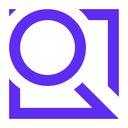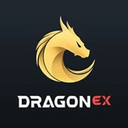- Zilliqa team is currently working on the Q2 testnet 2.0 launch with smart contracts alpha (beta will be released in Q3). After that comes the actual mainnet launch which should be ready for the Q3 of 2018. Anchor dApps are planned for Q4 with a 5 million USD grant to motivate developers and further work on privacy, interoperability and storage solutions (one of the biggest issues with sharding is the amount of disk space required for it to function) in 2019.
- Zilliqa’s fundamentals have resulted in coins good performance on the market. Q2 has seen the price go up as high as 2350 satoshi which has recently consolidated a bit and went back to being slightly above 1600Zilliqa’s fundamentals have resulted in coins good performance on the market. Q2 has seen the price go up as high as 2350 satoshi which has recently consolidated a bit and went back to being slightly above 1600. The coin is currently traded at 1672 satoshis, or 0.12 USD, and is threatening to overtake Zcash on the no. 24 spot of the cmc’s cryptocurrencies by market cap list.. The coin is currently traded at 1672 satoshis, or 0.12 USD, and is threatening to overtake Zcash on the no. 24 spot of the cmc’s cryptocurrencies by market cap list.















